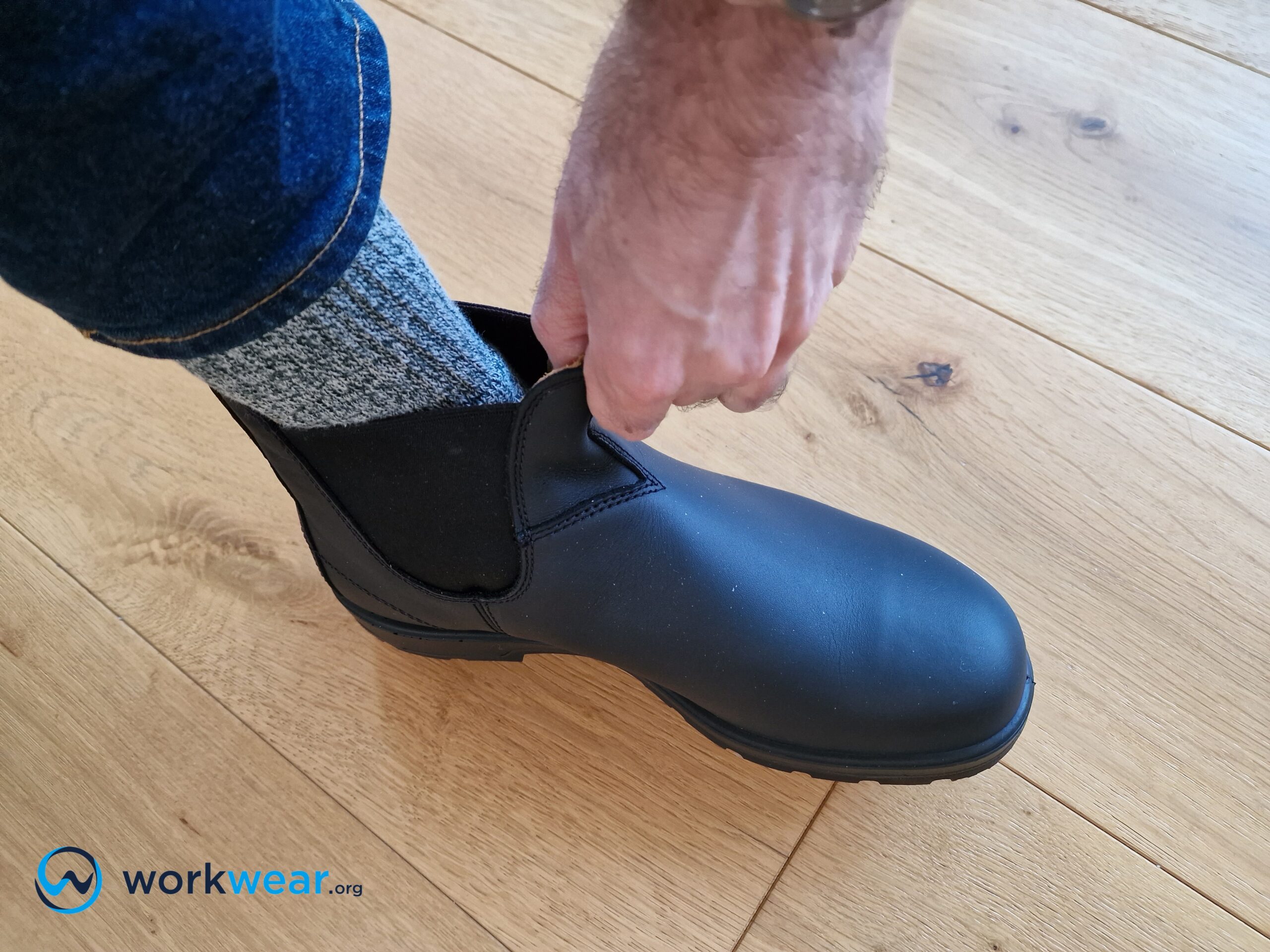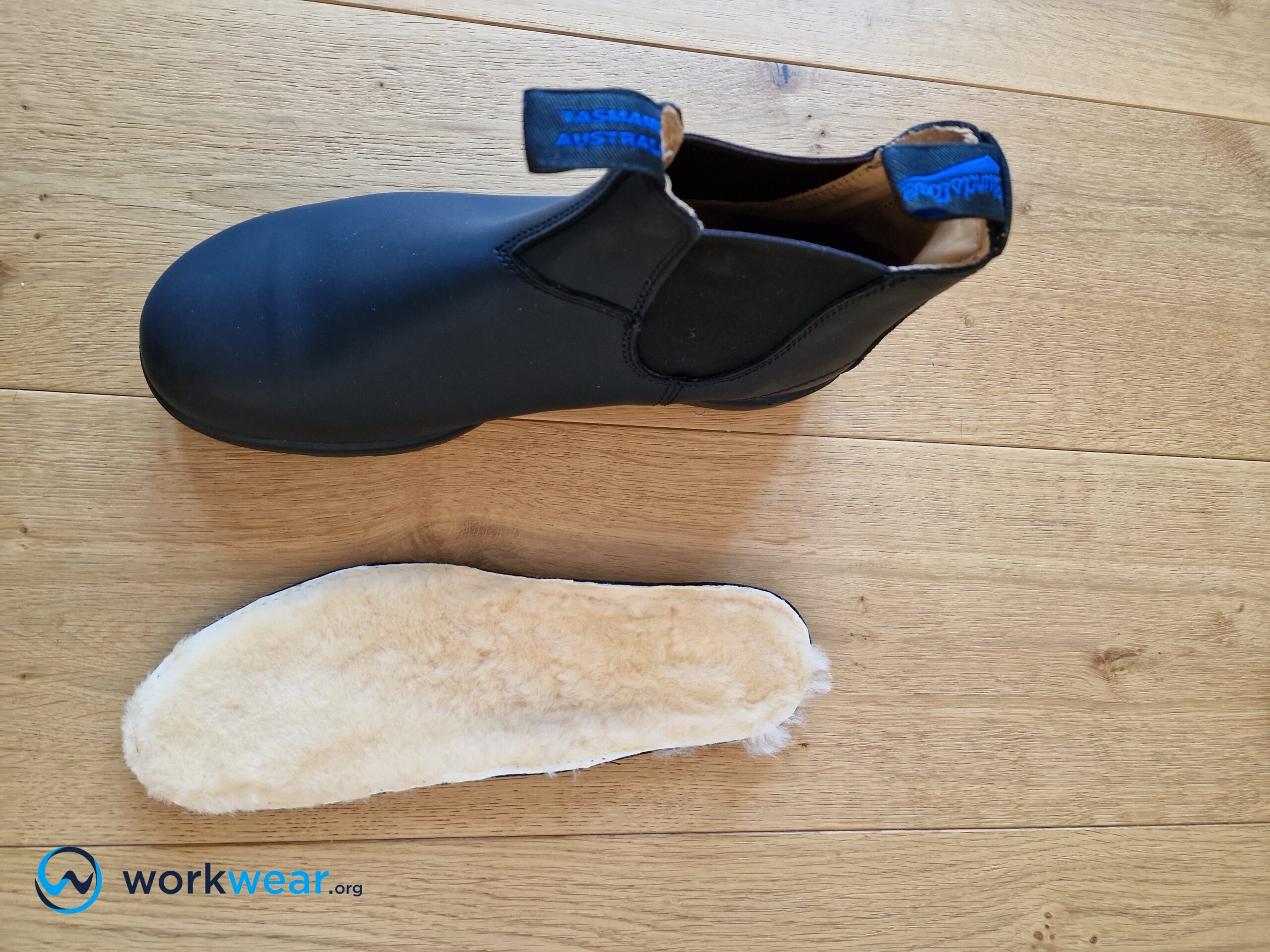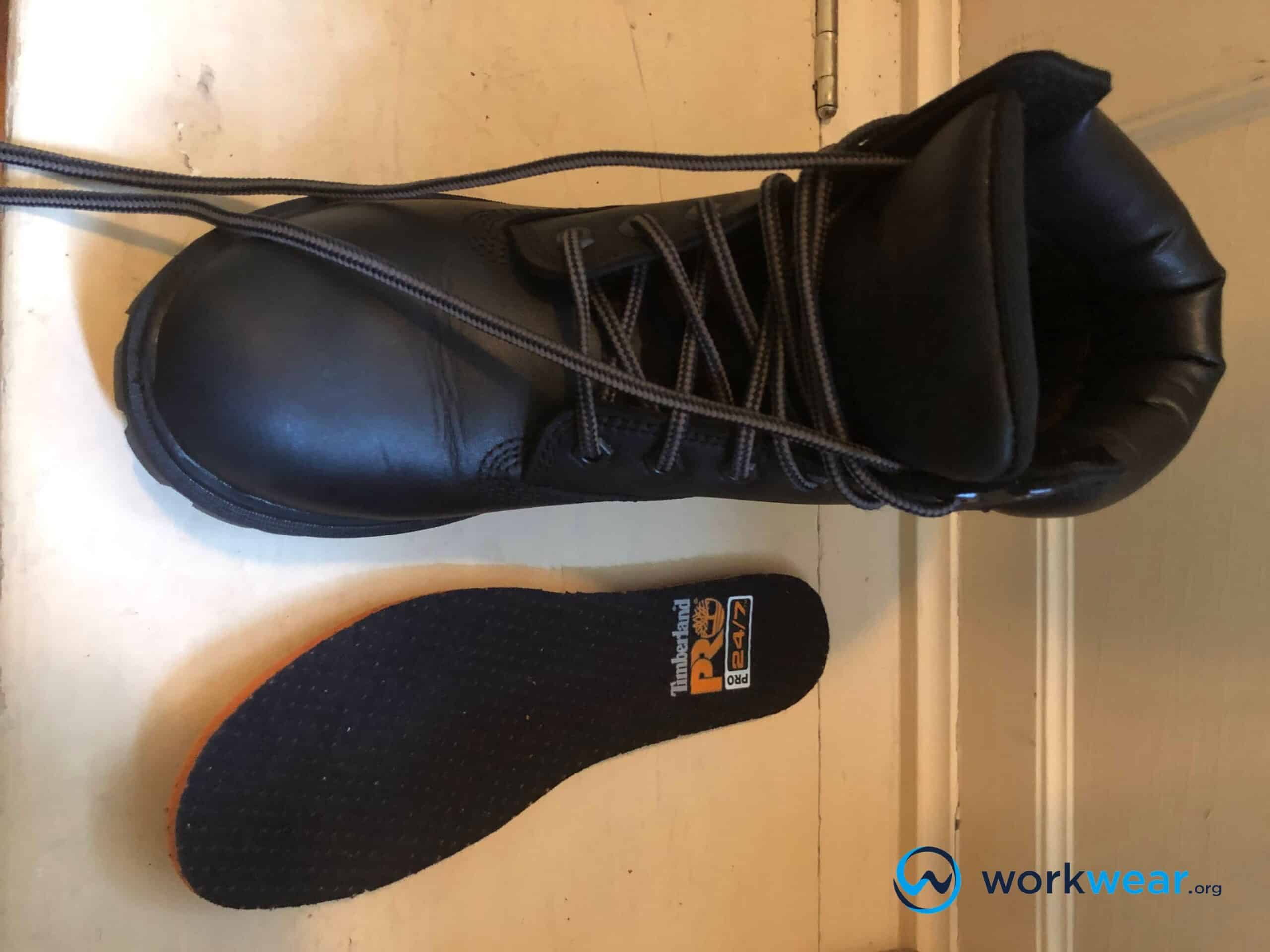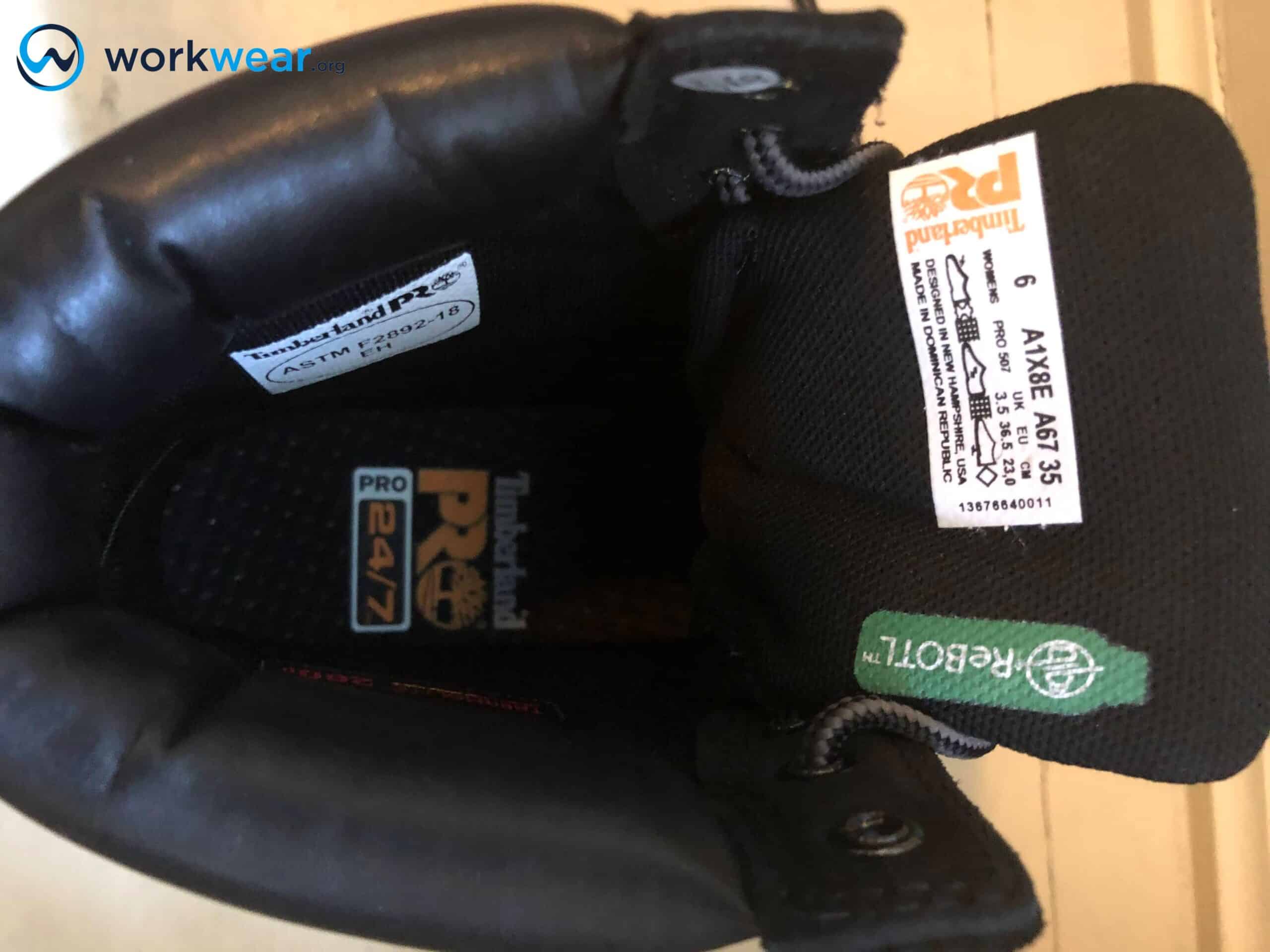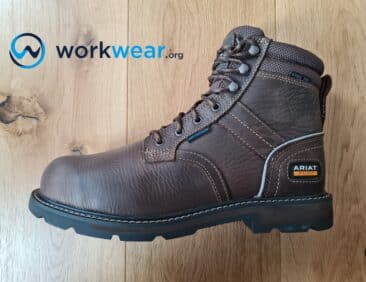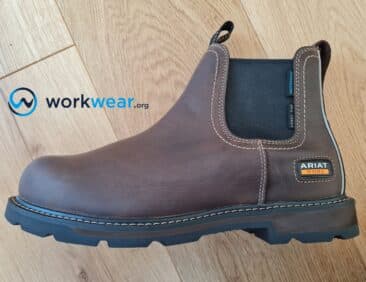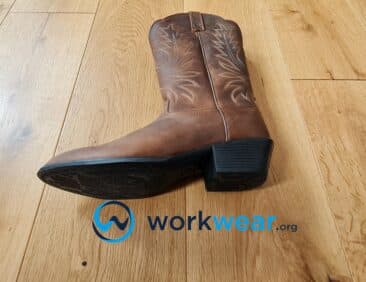Natural Vs Synthetic Insulation Materials in Work Footwear – A Detailed Comparison
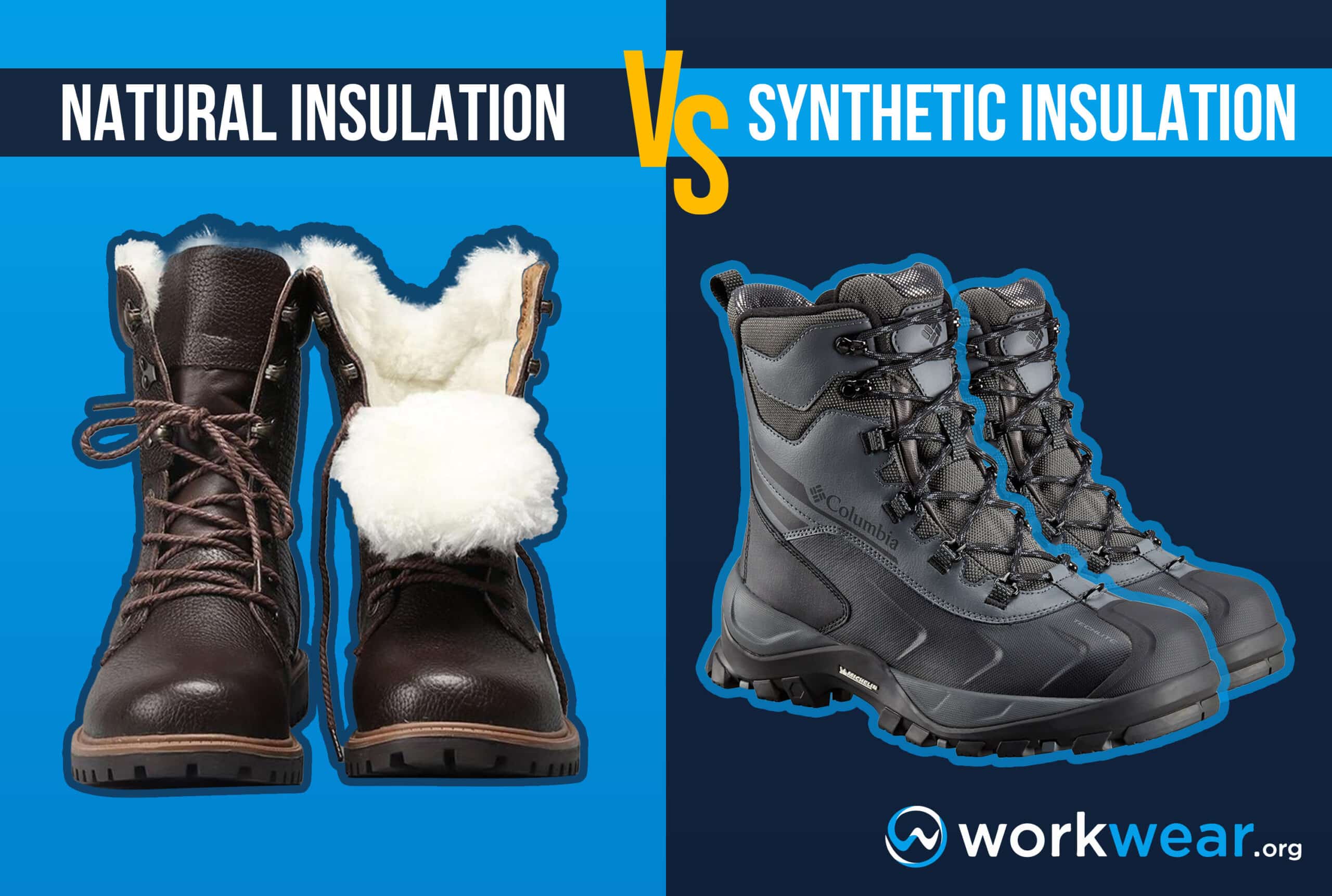
When you work in cold climates, insulated work boots are a must to keep your feet warm throughout the day. Did you know these boots use synthetic and natural materials to insulate the feet against the cold? If you want to know more about these materials, you’re in the right place. I’ll discuss these materials’ differences and similarities to give you a better understanding of how they work to maintain comfortable warmth for your feet.
Main Similarities of Natural and Synthetic Insulation Materials in Work Footwear
Heat Retention
Natural and synthetic insulation materials are equally reliable for keeping the feet warm in cold conditions. This is true even if they function differently in other aspects. These insulation materials trap heat inside the boots, keeping the feet enveloped in a warm cocoon to fight discomfort in cold environments. The superior warmth retention helps maintain a comfortable experience while working and walking around low-temperature settings. Natural (such as sheepskin and fleece) and synthetic materials (including 3M Thinsulate and Primaloft) for insulation have fibers that trap warm air to seal in much-needed heat and stop it from leaking out of the work footwear. These fibers also stop cold air from getting in.
Winner: Natural and synthetic insulation materials are winners in keeping the feet warm and comfortable in work footwear in low-temperature conditions.
Comfort
Natural and synthetic materials used for insulation work boots enhance foot comfort in different ways. Synthetic insulation materials like Primaloft and Thinsulate are much less bulky than natural materials. They have thinner fibers that take up only a small portion of work boot interiors, so the footwear doesn’t feel too tight even with the insulation material built in. Synthetic materials are typically more breathable, allowing the air to circulate much better than natural materials to stop moisture build-up.
Natural insulation materials also have their brand of magic to keep the feet comfortable. Materials such as sheepskin and fine fleece (or shearling) are known for softness, so they surround the feet with a comforting texture. It’s worth noting that natural insulation materials often need to be much thicker to provide extra warmth, so they can make the boot interiors feel quite tight and bulky (depending on the insulation material’s weight). The bulky material can also make the footwear heavy and uncomfortable for long periods.
Winner: Both material types deliver comfortable insulation, but synthetic materials have a slight edge over natural options. This is because synthetic materials typically have lightweight, low-profile structures that don’t take up too much space and have the same (or even better) heat retention as natural materials.
Breathability
Breathability is still essential to foot comfort, even in cold surroundings. Synthetic and natural insulation materials keep work footwear breathable by allowing the air to move around the spaces between the fibers. While keeping the feet warm, they also prevent humidity from building up, resulting in enhanced foot comfort while handling strenuous tasks in low-temperature environments.
Winner: Both options for insulation materials are winners in this category because of their breathable structures.
Main Differences of Natural and Synthetic Insulation Materials in Work Footwear
Weight
Natural and synthetic materials can have widely varying structures regarding weight. Synthetic insulation materials such as Primaloft and Thinsulate are known for their lightweight properties. They have thin fibers that trap warmth, insulating the feet against the cold without increasing the footwear’s weight. These materials can be manageable to deliver the required level of insulation. Work boots with synthetic insulation are typically more comfortable to wear over long periods of walking since they don’t weigh the feet down.
On the other hand, natural materials usually need more layers to seal in much-needed warmth. The thicker the material is, the stronger its heat retention will be. With more layers built in to battle the cold, the work footwear naturally becomes heavier. Natural insulation materials keep the feet warm but tend to make work boots feel a lot weightier than those with synthetic insulation.
Winner: Synthetic insulation materials come out on top because of their lightweight structures that keep the feet warm without increasing the footwear’s weight. It’s worth noting that synthetic materials have different weight and insulation levels corresponding to varying levels of coldness in the environment.
Bulk
Synthetic insulation materials typically have low-profile designs. They trap warm air in the small spaces between the microfibers, maintaining the thin structures that don’t take up a lot of space inside the footwear. These synthetic materials keep the feet warm while leaving enough space for comfortable foot movements.
Meanwhile, natural materials typically need more layers to seal the extreme cold. They take up more space in the footwear to effectively seal out the cold air and maintain a comfortable warmth. As a result, foot motion may be limited as the interior becomes too tight to allow comfortable flexing. The added bulk often results in a weightier work footwear profile, too.
Winner: Synthetic insulation materials with low-profile structures win in this aspect because they leave enough room for comfortable foot movements, unlike natural materials that can make work footwear feel unbearably tight and heavy.
Ability to Insulate When Wet
Synthetic and natural insulation materials function differently when they’re exposed to wetness. Synthetic materials have a higher resistance to wetness. They also retain their insulating properties even when wet, which may be unavoidable outdoors in cold climates. Even if liquids enter work boots and make synthetic insulation materials (such as Thinsulate and Primaloft) wet, the materials keep the feet warm.
On the other hand, natural insulation materials don’t fare so well with exposure to moisture. Materials such as wool and fleece clump up when wet, so they won’t be able to trap the required. As a result, the feet will feel unbearably cold in low-temperature conditions if liquids somehow enter the footwear.
Winner: In this comparison, synthetic materials are the clear winner because even when wet, they continue insulating the feet against the cold.
Durability
Durability is another aspect where natural and synthetic materials have varying performance levels. Synthetic materials are designed to protect the feet in cold environments for a long time. They don’t deteriorate easily, even when exposed to wetness, so they offer lasting insulation against the unbearable cold. Synthetic insulation materials retain quality and performance even when the work boots are used for strenuous activities.
Meanwhile, natural insulation materials tend to degrade quickly when exposed to liquids. This can be a big issue if the boots frequently get dirty or are used in environments with constant exposure to wetness. The materials can also deteriorate more easily when the work boots are used for heavy physical labor.
Winner: Synthetic insulation materials emerge as the winners because of their durable structures that perform well even with strenuous physical activities and exposure to wet elements.
Price
The prices of insulated work boots can be affected by the type of insulation materials they use. Synthetic insulation materials from brands such as 3M (for Thinsulate) and Primaloft generally drive up the price of work footwear. They can make work boots pricier than those using natural insulation materials. It’s worth mentioning that the higher price of synthetic insulation materials is more than justified by the overall higher level of performance and lasting strength in cold conditions. However, insulated work boots with natural insulation materials may still be a better option for those looking for the most affordable products.
Winner: Natural insulation materials typically result in insulated work boots that are more affordable. However, the superior performance and durability of synthetic insulation materials more than justify the higher price of work footwear.
Natural vs Synthetic Insulation Materials
| Feature |
Natural Insulation |
Synthetic Insulation |
|---|---|---|
| Heat retention |
|
|
| Comfort |
|
|
| Breathability |
|
|
| Weight |
|
|
| Bulk |
|
|
| Ability to insulate when wet |
|
|
| Durability |
|
|
| Price |
|
|
Which one is the Overall Winner?
In this comparison, synthetic insulation materials edge out their natural material counterparts. Synthetic insulation materials are lightweight, don’t take up a lot of space inside the footwear, continue to insulate even when wet, and are durable for long-term use. However, natural insulation materials are found in more affordable insulated work boot options than synthetic insulation.
Recap
Go for work footwear with natural insulation materials if you:
- Want insulated work boots at a lower price
- Work in areas that don’t get exposed to wetness
- Don’t do hard physical labor
Choose work footwear with synthetic insulation materials for:
- Wet, cold work conditions
- Longer-lasting insulated work boots
- Reliable insulation with a lightweight feel
Personal Testing Experience
These are my observations while using two high-quality insulated work boots. The Timberland Direct Attach Waterproof Boot showcased the classic Timberland profile that looked great on the job and even for casual use. It had Thinsulate insulation (of 200 grams) that sustained comfortable warmth for hours when working in really cold weather condition. The waterproof leather upper and seam-sealed construction ensured that liquids wouldn’t have a chance to get in as I worked in wet environments. Deep lugs on the outsole delivered a strong grip on challenging surfaces to stabilize my footing.
On the other hand, the Blundstone 566 Leather Chelsea Boot had a waterproof upper (including the side gussets) to ensure all-day foot dryness in wet conditions. It had a sheepskin footbed and Thinsulate insulation working together to keep my foot warm and comfy in cold settings. This pull-on boot had a lightweight design suitable for walking and standing all day since it didn’t drag on the foot. An exclusive shock absorption system prevented foot fatigue even with hours of continuous boot use. However, the boot’s outsole needed to be more robust than others.
Conclusion
Natural and synthetic insulation materials in work footwear keep the feet comfortable in cold conditions. Synthetic materials don’t degrade easily, continue insulating when wet, and are generally more durable. They also weigh less and don’t cause footwear to become bulky. On the other hand, natural insulation materials are typically seen in more affordable insulated work boots, so they’re better options for the budget-conscious.
FAQs
- Are work boots with Thinsulate insulation suitable for severely cold conditions?
- Yes, work boots with higher levels of Thinsulate insulation will keep the feet comfortably warm even in exceptionally cold environments.
- Do synthetic insulation materials make work footwear more expensive?
- In general, yes – synthetic insulation can increase the price of work footwear more significantly than natural insulation materials.
- Are work boots with natural insulation suitable for what work conditions?
- Work boots with natural insulation materials are best suited for jobs that don’t require intense or strenuous physical activities, where the materials can degrade more quickly.
- Is Primaloft made up of polyester alone?
- No, there are variations of the Primaloft insulation material made of polyester and merino wool.
678+
Products Reviewed
24+ Years
Combined Experience
500+ Hrs
Field Testing
